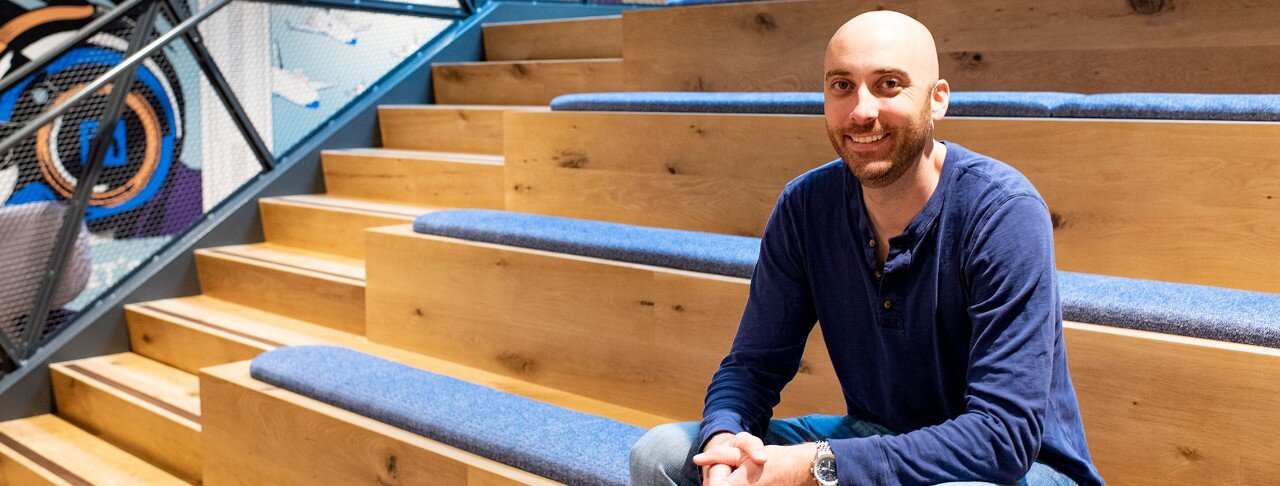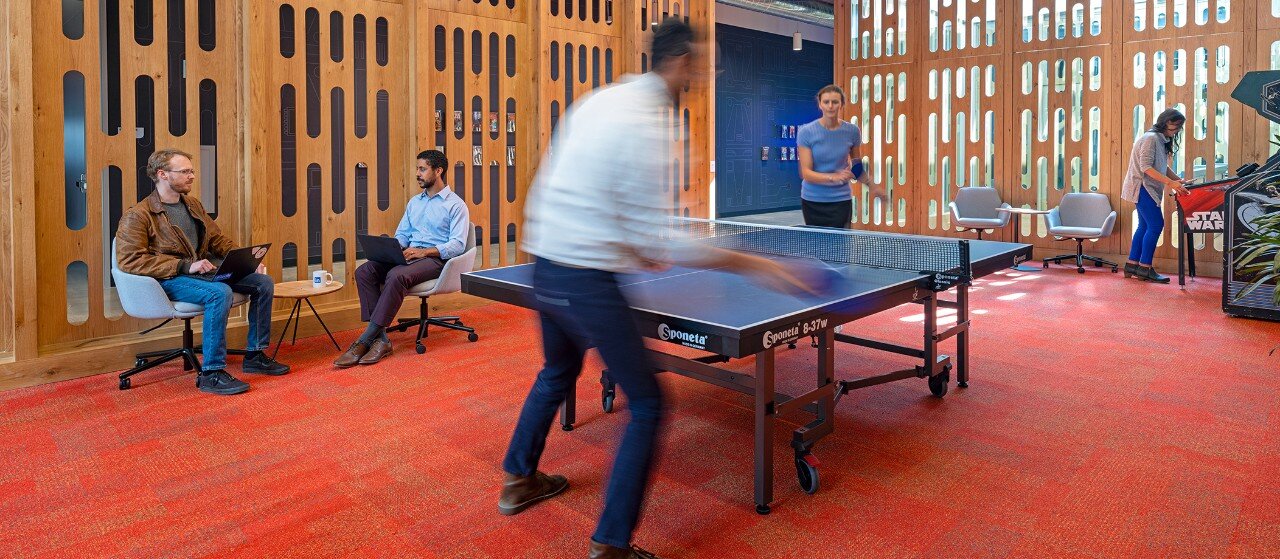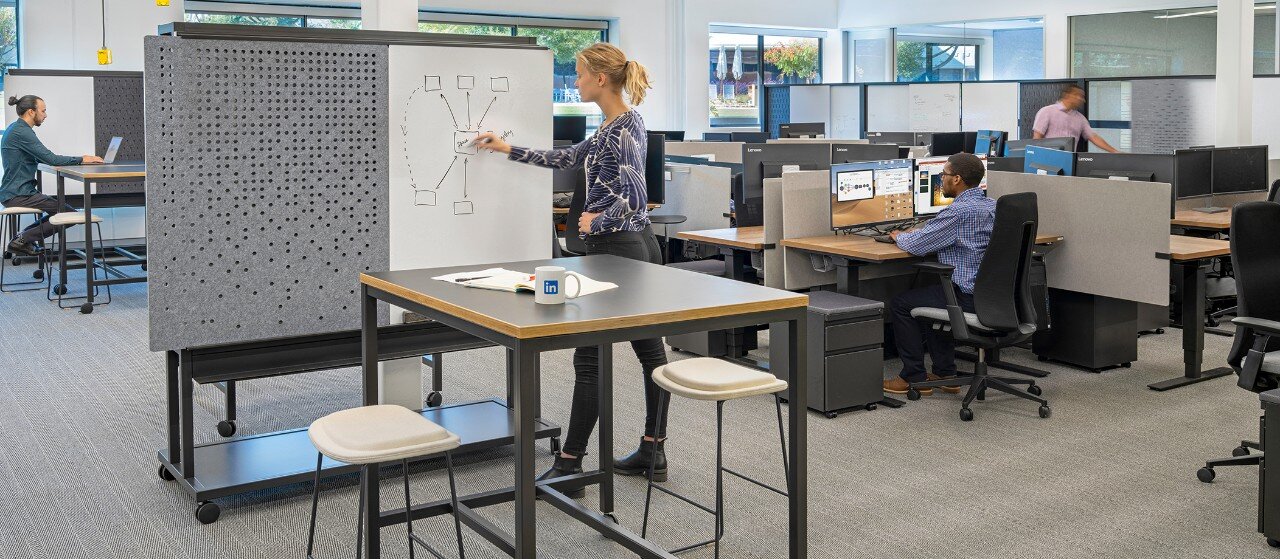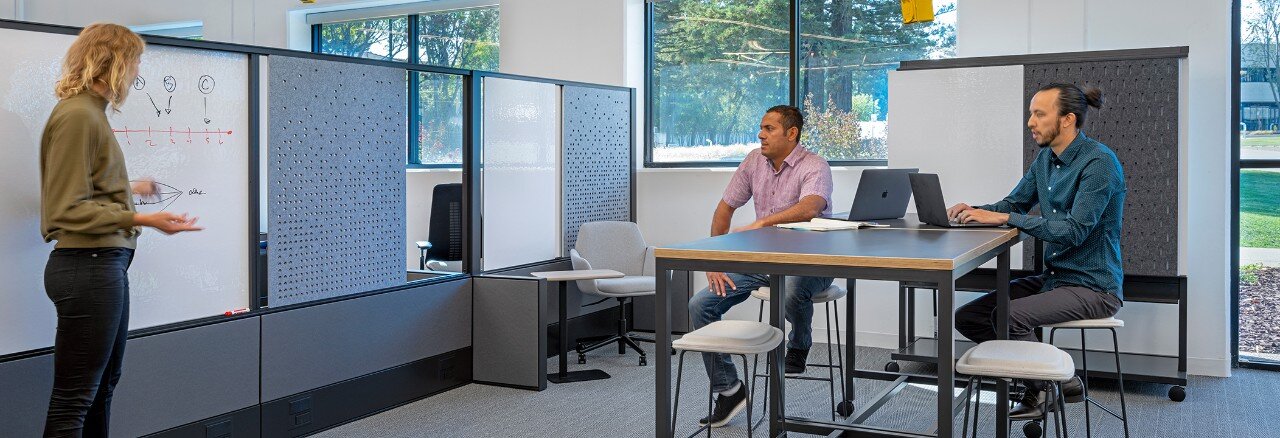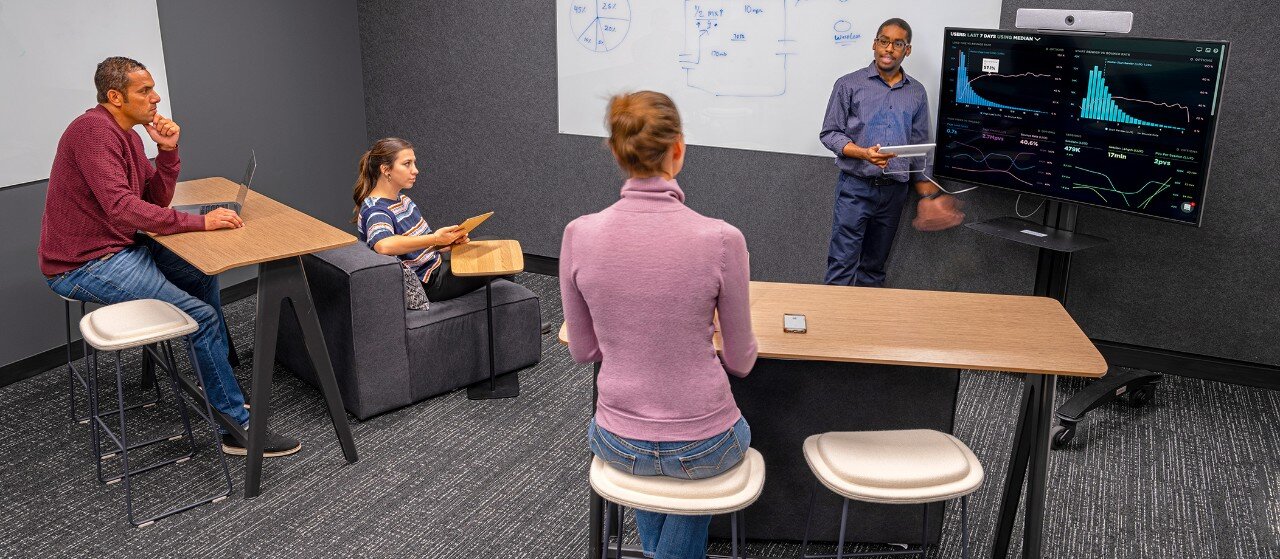The way we work continues to change, and our workspaces are adapting to meet employee needs. In Silicon Valley, these changes seem ahead of the curve. Companies are incorporating technology and setting the standard of future workspace trends to attract top talent in a highly competitive market. LinkedIn evolved how people network and share their professional personas, and it’s no surprise they’re leading how their own workspaces evolve. Spark interviewed LinkedIn’s Kevin Ahlborn, Program Director whose role includes Workplace Strategy and Workplace Performance, to learn how he creates informed workspaces to meet employee needs and where he sees the future of work.
The Changing Nature of Work
While looking at the dynamic work environment, Ahlborn seeks to understand how LinkedIn’s employees work, and what they need in terms of workspace to perform their best. At the Workplace Design Lab in Sunnyvale, California, Ahlborn and his team conduct ongoing research and experimentation to improve the work experience for LinkedIn employees globally. Recently, they incorporated learnings from their experiments into a new engineering building, and are helping shape workspaces to fit that team’s needs.
“In the Workplace Design Lab, we test concepts and ideas on a small scale, and measure their impact in a controlled environment. This allows us to quickly learn and iterate on ideas or concepts before rolling them out on a larger scale. Once we’re confident we’ve honed something, we can then deploy it globally and further tailor solutions for each team’s needs.”
—Kevin Ahlborn, Program Director at LinkedIn
LinkedIn’s workplace team uses a process Ahlborn calls the 3Es, which could apply to anyone looking to make workplace changes.
Engage – Ask employees how they work, what they need, and why they need it. Dig deeper to understand their responses.
Experiment – Continuously push the envelope and test ideas at a small scale.
Evolve – Take engagement and experiment learnings and deploy them in the workplace.
LinkedIn’s Workplace Design Lab accomplishes these 3Es through a 6-step process for testing solutions and ideas:
Make an observation to identify and clearly define the challenge.
Establish a baseline by defining what is being measured and measuring it in the current state.
Develop a hypothesis about how things work and attempt to answer the challenge in a way that can be tested.
Conduct an experiment using a carefully followed procedure to collect data.
Analyze the results and draw conclusions from your experiment.
Report findings to the greater organization in a final report.
A Human-Centered Approach
People are an organization’s greatest asset and are at the heart of workplace change. How do people in certain roles collaborate? What is the organizational culture and the subculture unique to each team? Addressing these questions informs workspace design. To find these answers, LinkedIn surveys, observes, measures utilization, and talks to people about their work dynamics.
“Depending on their role within the organization, employees can use space in a variety of ways. It is our job to understand what they need in order to be as effective and engaged as possible. We need to provide choice and show people how to use each space for various activities.” Ahlborn adds, “Teams—especially in tech—expand and contract over the course of a project. People come in and out of a project as it evolves. Our workspaces are designed to adapt to that dynamic environment.
“We’ve created a neighborhood-based environment where you have the tools you need to be successful. If you need a workstation to sit at, you can find one, and if you need to catch up on emails, there are sofas. If you need to have a one-on-one with someone, there’s space and furniture outside that accommodates those conversations. Haworth helped prototype design applications for our neighborhoods, which include moveable furniture, workstations, task seating, and acoustic and writable partitions. We also have conference rooms that allow for meetings and video conferencing.
“Our sourcing team, on the other hand, spends a lot of time looking at contracts. They don’t have as much use for collaborative spaces. A lot of folks on their team like to sit at workstations with two 27-inch monitors, so they can have four documents open at once to compare. They also have phone booths that allow them to step into an acoustically private space and conduct calls as needed.”
Different Teams, Different Needs
Haworth’s Client Design Studio collaborated with LinkedIn to understand the types of work their employees do every day. Informed by our teams’ collective knowledge and research, as well as a combination of observation, interviews, focus groups, and sensor data of space utilization, LinkedIn installed and tested product solutions and concepts at the Workplace Design Lab.
The team at the Workplace Design Lab observed that only about 30% of their workstations are occupied during regular business hours, as people are in meetings, working from home, or traveling. So, the team increased their attention to experimentation with both collaborative spaces and focus spaces. Testing concepts and solutions in their own workspace gave LinkedIn’s Global Workplace Strategy team firsthand knowledge and experience on how unique products and applications support different workstyles.
Utilizing the research about workspace usage and dynamics happening at the Workplace Design Lab, Haworth’s strategists, designers, and researchers turned to a new project – a new building dedicated to engineers. Haworth and Ahlborn’s team got input from LinkedIn’s Research & Development and Engineering teams through interviews, design research, and workshops. We learned that the engineers need both collaborative and heads-down focus workspaces to allow for a variety of workstyles. They often collaborate during paired coding, working side-by-side to review code from a quality assurance standpoint. Using the knowledge gained from experiments at the Workplace Design Lab, we created a dynamic environment that provided spaces to reflect the ways these employees work.
A key to the success of this approach is providing people choice and control, as well as space legibility so they know how to use each space. At the Workplace Design Lab, Ahlborn’s team had experimented with moveable panels, configurable furniture on wheels, collaborative space, library space, utilization tools, and retractable power from above, which they brought to the new engineering building. These tools accommodate flexible and adaptable spaces that teams adjust to fit their needs. For example, sliding panels in the engineers’ space allow teams to expand and move into the bay next to them temporarily, or the panels can be completely removed as well.
To empower employees with choice and control over their spaces, LinkedIn communicates configuration flexibility, what can be moved, and how to do it through signage showing space examples. They have also enlisted an onsite workplace concierge, who is available to answer questions, educate employees on the options available to them, and assure them that it’s okay to move things around—in fact, it’s encouraged.
Future Workspaces
Ahlborn’s current studies include outdoor workspaces and reception areas. He is exploring how best to enable employees to comfortably work outside in an ergonomic environment. He’s also looking at how to elevate the reception experience for all guests, candidates, and employees.
Ahlborn says the future of work, “will not be as drastically different as some people believe; technology will seamlessly interface with our jobs, but the office will still be the primary destination for interaction and engagement.”
People inherently need human connection, especially in this era of mobile technology. Encouraging face-to-face communication at work is on the rise to counteract loneliness and the isolating effects of digital communication on well-being. Ahlborn notes the office will be the place people come to meet and engage. He also says the space itself will look and feel less like a typical office and more like a comfortable lounge with a variety of social spacesfor work. “The future workspace will provide variety and choice to employees who will have control over the spaces where they work. Technology will continue to develop, and digital experiences will grow, but in a seamless, thoughtful way.”
As the nature of work continues to evolve, it’s vital to reflect on individual and team needs and follow a process to inform design decisions like Ahlborn’s. No two teams are alike, and probing organizational culture, team subcultures, and differences in workstyles will help guide space choices. Following LinkedIn’s lead, it’s increasingly important to consider your future work environment, the role technology will play in your work as well as your interactions with one another, and the expectations of future generations.


